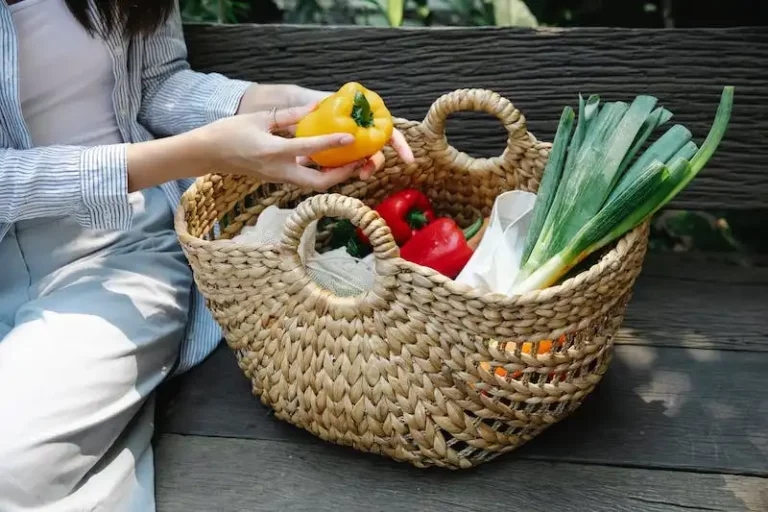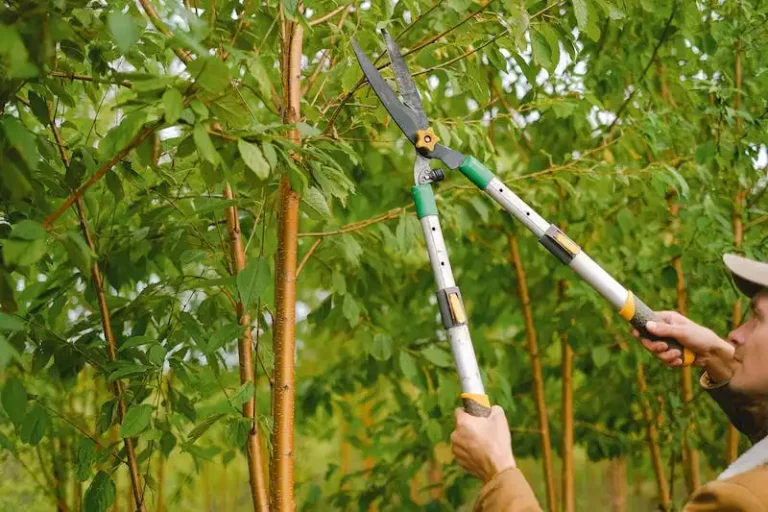Carrots are a healthy and versatile vegetable that can be grown in home gardens. However, as the carrot seedlings begin to grow, finding the right spacing is crucial to ensure that each plant becomes fully mature and produces high-quality carrots. Thinning is the process of removing some of the seedlings to create more space between each plant.
In the beginning, it is important to water the carrot seeds regularly to aid in germination. Once the warm season begins, the carrot seeds will start to sprout. At this point, you can start thinning the crop to ensure proper growth. Thinning involves removing some of the plants to create a distance of about 2 inches between each exposed carrot.
To thin the carrot plants, gently pull out the smaller ones, leaving behind the stronger and healthier seedlings. It’s crucial to be careful and not damage the roots of the surrounding plants. If you accidentally create a hole in the soil while pulling the seedling, make sure to fill it with some loose soil to avoid any damage to the neighboring plants.
Thinning the carrot plants not only helps them grow better but also allows you to replant the thinned seedlings elsewhere in the garden. These baby carrots can be harvested quickly and provide a tasty treat. The thinned seedlings can be replanted after a few weeks for a second harvest.
In conclusion, knowing how to thin carrots is an essential skill for any home gardener. By following the right steps and thinning the crop at the right time, you can ensure that your carrots grow well and become fully mature. Thinning allows the plants to have enough space to develop and results in larger, sweeter carrots. So, remember to thin your carrot plants and enjoy a bountiful harvest!
A Complete Guide To Thinning Carrots
Thinning carrots is an important step in growing a successful carrot crop. While it may seem counterintuitive to remove some plants from your garden, thinning is necessary to ensure that the remaining carrots have enough space to grow and develop.
There are several ways to thin carrots, but one of the easiest and most frequently used methods is simply pulling out the extra seedlings. Remember to do this while the carrot seedlings are still small, as they will be easier to uproot.
Thinning carrots has several advantages. First, it allows the remaining carrot plants to have more room to grow, resulting in larger, healthier carrots. Thinning also helps to promote good air circulation and reduces the likelihood of disease spreading among your plants.
When thinning your carrots, keep in mind the spacing requirements for the variety you have planted. Most carrot seed packets will provide information on the ideal spacing between plants. Typically, carrots need to be thinned to about one to two inches apart, depending on the variety.
Thinning can be done by gently pulling out the unwanted seedlings, being careful not to disturb the roots of the remaining plants. Alternatively, you can use a pair of scissors to snip off the tops of the unwanted seedlings at ground level.
If you’ve never thinned your carrots before, it’s a good habit to get into as it will improve the overall quality of your carrot harvest. Thinning should be done when the carrot seedlings are about one to two inches tall and have their first true leaves.
If you don’t thin your carrot seedlings, they will compete for the same resources, resulting in stunted growth and small, misshapen carrots. Thin carrots once and you’ll quickly see the difference it makes in the size and beauty of your mature carrots.
Some people may be concerned about wasting the seedlings that are pulled during thinning. However, these tiny carrots are still edible and can be washed and used in salads or other dishes. Don’t let them go to waste!
In conclusion, it’s important to thin your carrot seedlings to achieve the best results in your garden. By finding the right spacing and removing the extra plants, you will help ensure that your carrots grow to their full potential. Thinning may seem like an extra step, but it’s a crucial one for any gardener looking to grow strong, healthy carrots.
If you need more information about thinning carrots, there are plenty of resources available online. Check out the links below for videos and other guides that can help you with this important task.
What Exactly Is “Thinning Carrots”
If you are new to gardening, you may have heard the term “thinning carrots” but are not quite sure what it means. Thinning carrots is the process of removing some of the young carrot plants in your garden to create proper spacing between them. This is essential because carrots need enough room to grow and develop into mature, full-sized carrots.
So, why should you thin your carrots? Well, the main reason is to ensure that each carrot has enough space to grow. Carrots that are overcrowded can become stunted, misshapen, or even fail to develop at all. Thinning also helps with airflow and sunlight penetration, allowing the plants to grow healthily. It prevents the carrots from competing for nutrients, water, and sunlight.
Thinning carrots is a relatively quick and easy task that can be done at home. You can use your finger or a small garden tool to gently uproot the unwanted carrot seedlings. Be careful not to disturb the neighboring plants or damage the roots of the ones you want to keep. Once you have removed the excess plants, make sure to water the remaining ones thoroughly to help them recover.
When should you thin your carrots? Thinning is best done when the carrot seedlings are still small, about 1 inch tall. At this stage, the plants are less likely to be damaged during thinning. It is important to thin early to avoid overcrowding and promote healthy growth.
The rule of thumb for thinning carrots is to leave about 1 to 2 inches of space between each plant. This will give the roots enough room to develop and grow into beautiful, fully mature carrots. If you find it challenging to estimate the spacing, you can sprinkle some carrot seeds in-between the existing plants to fill any gaps.
Thinning carrots is usually done in two stages. The first thinning is done when the seedlings are about 1 inch tall, as mentioned earlier. During this stage, you can thin to about 2 to 3 inches apart. The second thinning is done when the carrot tops are about 3 to 4 inches tall. At this point, thinning to about 4 to 6 inches apart will give the remaining carrots ample space to develop.
Thinning carrots may seem like extra work, but it is an essential step in growing a successful carrot crop. By thinning, you are allowing your carrots to reach their full potential and avoiding common problems that can arise from overcrowding. So, the next time you plant carrot seeds, don’t forget to thin them out for healthier and more abundant root harvest!
What Are The Advantages Of Thinning Carrots
Thinning carrots is an essential step in cultivating these root crops, and it offers several advantages for the home gardener. Here are some of the main benefits:
- 1. Better Carrot Growth: Thinning allows the remaining carrots to have more space to grow. By removing excess seedlings, the remaining ones have more access to sunlight, water, and nutrients, resulting in larger and healthier carrots.
- 2. Improved Air Circulation: Thinning helps increase air circulation around the carrot plants, reducing the risk of diseases and pests. This promotes a healthier growing environment for the carrots.
- 3. Easier Harvest: When carrots are planted too close together, their roots can become intertwined and difficult to separate during harvest. Thinning ensures that each carrot has enough space to develop a complete and mature root, making it easier to pull them from the ground.
- 4. Prevents Overcrowding: Overcrowded carrots can compete for resources and may not reach their full potential. Thinning helps maintain an appropriate spacing between the plants, preventing overcrowding and ensuring that each carrot receives the necessary resources to grow.
- 5. Identifying Troublesome Seedlings: Thinning allows the gardener to identify and remove any seedlings that are weak or diseased. By observing the growth patterns of the seedlings, it becomes easier to spot any issues early on and provide proper care to the healthier ones.
By thinning carrots, home gardeners can promote better growth, reduce the risk of diseases, and make harvest easier and more efficient. It is an essential practice that should not be overlooked when cultivating carrots in the garden.
Different Ways Of Thinning Carrots
When it comes to thinning carrots, there are several methods you can use to achieve the best results. Thinning is an important step in carrot cultivation as it allows the remaining carrots to grow to their full potential. In this article, we will explore the different ways you can thin your carrot seedlings.
One popular method of thinning carrots is by pulling out the smaller seedlings. This is done by gently grasping the top of the plant and carefully pulling it out of the soil. By doing this, you give more space for the remaining carrots to grow and develop their root systems. However, it’s important to be mindful of the taproot, the main root of the plant, and avoid damaging it.
Another way to thin carrots is by cutting the seedlings at the soil level. This method involves using a pair of scissors or gardening shears to cut the plants, leaving the healthier and stronger ones behind. By removing the weaker seedlings, you ensure that the remaining carrots have enough space and nutrients to grow.
Some gardeners prefer a more gradual approach to thinning their carrots. Instead of thinning all at once, they thin in stages, allowing the carrots to space themselves out naturally. This method is particularly useful if you have a large carrot patch with many seedlings. By thinning gradually, you can monitor the growth of the carrots and ensure that they are evenly spaced.
An alternative to thinning is to directly sow the seeds at the correct spacing to begin with. By planting the seeds at the recommended distance, you can avoid the need for thinning altogether. This method works best with smaller carrot varieties, such as the Nantes or Chantenay carrots, which naturally grow spaced apart.
Regardless of the method you choose, it’s important to thin your carrots. Thinning not only improves the overall health of the carrots, but also allows them to develop their full flavor potential. So whether you prefer pulling, cutting, or spacing, make sure to thin your carrots to achieve the best harvest.




